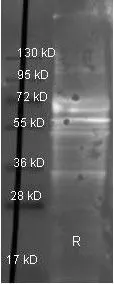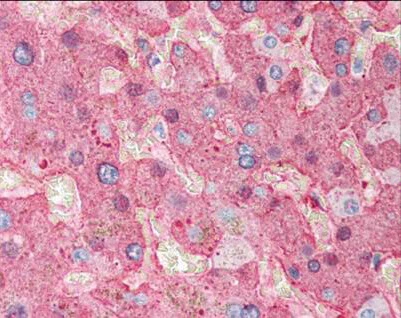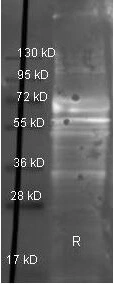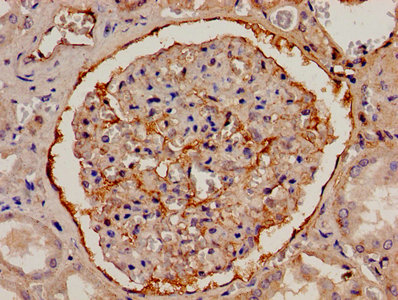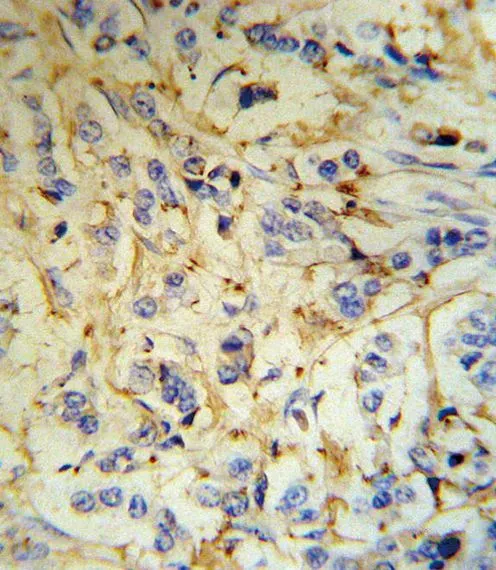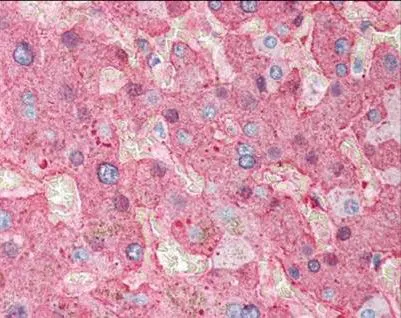
IHC-P of Goat Anti-Fibrinogen antibody (GTX26666). Tissue: human liver tissue. Fixation: formalin fixed paraffin embedded. Antigen retrieval: not required. Primary antibody: Fibrinogen antibody at 1:500 for 1 h at RT. Secondary antibody: Peroxidase goat secondary antibody at 1:10,000 for 45 min at RT. Localization: Fibrinogen is localized in plasma. Staining: Fibrinogen as precipitated red signal with hematoxylin purple nuclear counterstain.
Fibrinogen antibody
GTX26666
ApplicationsImmunoFluorescence, Western Blot, ELISA, ImmunoCytoChemistry, ImmunoHistoChemistry, ImmunoHistoChemistry Paraffin
Product group Antibodies
TargetFGA
Overview
- SupplierGeneTex
- Product NameFibrinogen antibody
- Delivery Days Customer9
- Application Supplier NoteWB: 1:2000-1:10000. IHC-P: 1:500. ELISA: 1:20000-1:100000. *Optimal dilutions/concentrations should be determined by the researcher.Not tested in other applications.
- ApplicationsImmunoFluorescence, Western Blot, ELISA, ImmunoCytoChemistry, ImmunoHistoChemistry, ImmunoHistoChemistry Paraffin
- CertificationResearch Use Only
- ClonalityPolyclonal
- Concentration90 mg/ml
- ConjugateUnconjugated
- Gene ID2243
- Target nameFGA
- Target descriptionfibrinogen alpha chain
- Target synonymsAMYLD2, Fib2, fibrinogen alpha chain, fibrinogen, A alpha polypeptide
- HostGoat
- IsotypeIgG
- Protein IDP02671
- Protein NameFibrinogen alpha chain
- Scientific DescriptionFibrinogen exists as a soluble dimer (340 kDa) in plasma. Each monomer is composed of an alpha chain (63.5 kDa), a beta chain (56 kDa), and a gamma chain (47 kDa). Fibrinogen is an acute phase protein that is part of the coagulation cascade of proteins. The end result of the cascade is the production of thrombin that converts fibrinogen to fibrin. The amount of fibrinogen in the plasma can serve as a nonspecific indicator of whether or not an inflammatory process is present in the body.
- Storage Instruction-20°C or -80°C,2°C to 8°C
- UNSPSC12352203
References
- The formulation and characterization of 3D printed grafts as vascular access for potential use in hemodialysis. Cheng B et al., 2018 Apr 23, RSC AdvRead more

